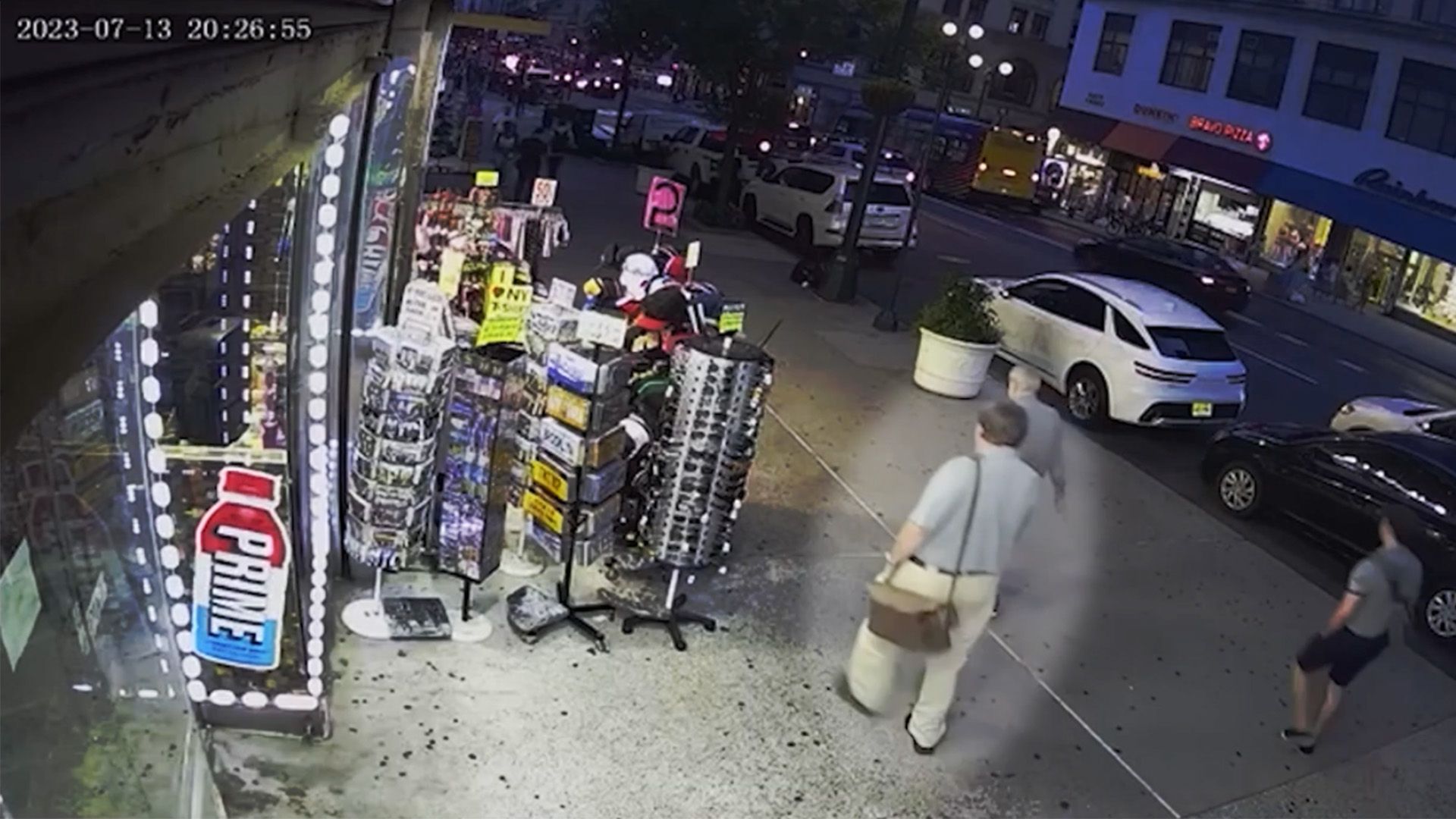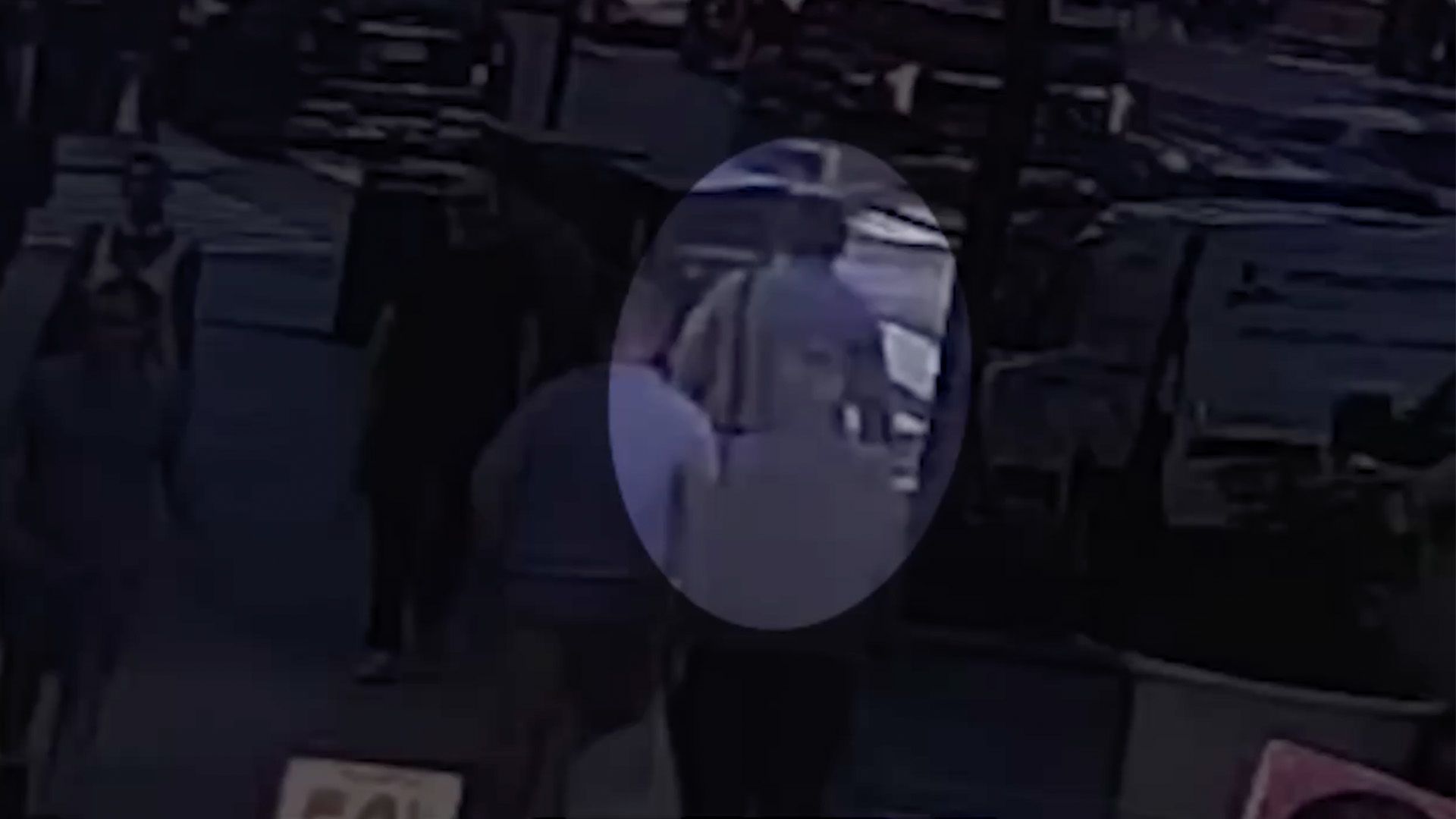
On a Thursday night in Manhattan last July, architect Rex Heuermann calmly strolled along Fifth Avenue after leaving his office around 8:30.


This is a modal window.
Clad in casual business attire and carrying a messenger bag, he walked past a small gift shop …

He was suddenly approached by a man in a suit, then two more, then four more … completely surrounding him.

This is a modal window.

This is a modal window.
By morning, Long Islanders would learn there had been an arrest in the 13-year-old cold case known as the Gilgo Beach serial killings.

In the past year, Heuermann has been charged with murder in the killings of six women, and officials suggest there could be more charges to come.
Gilgo Beach killings: 1 year after arrest, suspect Rex Heuermann faces possibility of more charges
Rex A. Heuermann's arrest on murder charges in three Gilgo Beach killings one year ago broke open a case, using a witness' vehicle description and DNA found on a discarded pizza crust, that long had confounded investigators.
One year later, the 60-year-old from Massapequa Park who had lived a seemingly normal life as the head of a midtown Manhattan architecture firm and married father of two adult children is now charged in the killings of six women and is a suspect in the killing of a seventh.
The list of Heuermann's alleged victims could grow, as the law enforcement task force headed by Suffolk County District Attorney Ray Tierney works to determine if Heuermann can be linked to any of the other Gilgo victims' deaths — or any other unsolved killings.
“We're gonna turn our attention, not only to the rest of the bodies on the beach, but also off in Suffolk County,” Tierney told Newsday recently.
That investigative process will be lengthy and will involve DNA testing of any available evidence.
Heuermann has pleaded not guilty to murder charges in the killings of six women and is being held without bail at the Suffolk County Jail in Riverhead, where he is housed separate from most inmates due to the nature of his alleged crimes.
Mounting a defense
His lead defense attorney, Michael J. Brown, did not respond to a request for comment but is expected to file a series of motions in the coming months, seeking to suppress the results of DNA testing that prosecutors have alleged links Heuermann to his victims.
Heuermann, like any criminal defendant, has a constitutional right to a speedy trial that his defense can invoke. But in this case, his lawyers have a tremendous amount of discovery to analyze as they prepare to mount a defense. If convicted of the top charge in the indictment — first-degree murder — he faces up to life in prison.
This is a modal window.
More coverage of the Gilgo arrest, 1 year later
- How has Heuermann's arrest impacted his wife and children?
Hear from Massapequa Park and Gilgo Beach residents fed up with the extra attention
Learn how new DNA techniques could be tested during Heuermann's trial
Explore a timeline of key moments in the Heuermann case
Fred Klein, a professor at Hofstra University's law school and a former Nassau homicide prosecutor, said he expects the defense to file a motion for severance that would separate the proceedings for the “Gilgo Four” victims from the others that Heurermann has been charged with.
“I think it's more likely that there will be an effort by the defense to separate the Gilgo Beach [four] victims from the rest,” Klein said. “They'd have to argue that the statute that allows the prosecution to try multiple crimes at one trial doesn't apply to those victims.”
A timeline for when Heuermann will go on trial before Supreme Court Justice Timothy Mazzei, a veteran judge and former prosecutor who is known to run a tight schedule in his Riverhead courtroom, is difficult to estimate.
A series of pretrial hearings is almost certain to take place on issues such as the admissibility of the DNA evidence and other evidence found as a result of the police searches of Heuermann's home and storage units after his arrest.
“He's an aggressive judge,” Klein said. “If he wanted to push this case, he would do it. He would do it by severing the new charges, pushing a review of the grand jury minutes to make sure the indictment is proper. And then they've gotta complete discovery, and then the judge needs to determine what hearings are going to occur. Then he's ready for trial.”
'Prime suspect'
Heuermann was arrested outside the Fifth Avenue office of his midtown Manhattan architectural firm on July 13 last year and charged in the killings of Melissa Barthelemy, Megan Waterman and Amber Lynn Costello. He was then called “the prime suspect” in the killing of Maureen Brainard-Barnes, who along with Barthelemy, Waterman and Costello are known as the Gilgo Four.
Six months later, Heuermann was indicted in Brainard-Barnes' killing. Authorities believe Brainard-Barnes, 25, of Norwich, Connecticut, was the first of the Gilgo Four to be killed sometime after she disappeared in 2007.
Her remains were found Dec. 13, 2010, on the north side of Ocean Parkway, near Gilgo Beach.
Brainard-Barnes’ remains were bound with a distinctive belt embossed with the initials WH or HM — one of three belts used to bind Brainard-Barnes, prosecutors have said.
The remains of Waterman, 22, of Scarborough, Maine, who was reported missing on June 8, 2010, and Costello, 27, of North Babylon, who was last seen alive on Sept. 2, 2010, were also found in that area on Dec. 13, 2010. The remains of Barthelemy, 24, of the Bronx, were found two days earlier during the search for Shannan Gilbert, who had gone missing from Oak Beach.
Three of the victims’ remains were found with a camo burlap that prosecutors have said is used by hunters. The victims were sex workers and were found “completely nude,” prosecutors have said in court papers.
Heuermann was identified as a suspect on March 14, 2022, when a state police investigator working on the task force, using a database that can search for vehicles by make and model, discovered that Heuermann owned a dark-colored Chevrolet Avalanche in 2010.
Heuermann also lived and worked in areas where burner phones were used to contact victims, prosecutors have said.
Witness statement
A witness statement had described Costello as leaving her home with a man, described as appearing like an “ogre” and driving a similar vehicle, the last time she was seen alive.
A similar vehicle description was also given by a witness in the killing of another woman, Jessica Taylor, a 20-year-old Poughkeepsie native who was living in Manhattan, court papers show.
Top, Rex Heuermann's Chevy Avalanche at the Suffolk County Crime Lab in Hauppauge on July 19, 2023. Bottom: A Google Maps image from 2011 shows the car parked in front of Heuermann's Massapequa Park house. Credit: James Carbone; Google
Taylor was last heard from on July 21, 2003 — five days before her partial remains were discovered by a dog walker just west of Halsey Manor Road in Manorville. Police interviewed a witness who said on July 25, 2003, at about 10:30 p.m., they had seen a dark-colored Chevrolet pickup backed into the same wooded area where Taylor’s remains were later found.
Lying on her back with her legs bent beneath her, Taylor was decapitated and both her arms had been severed below her elbows. A tattoo on Taylor’s torso had been “severely obliterated by a sharp object,” prosecutors said, adding that they believe that act, along with the dismemberment of her body, had been done by Heuermann to “inhibit” authorities from positively identifying her remains.
About eight years later, authorities found Taylor’s skull, hands and forearm along Ocean Parkway, just east of Gilgo Beach. Her remains were located less than a mile from where the remains of the Gilgo Four were discovered.
Rex Heuermann appears in Suffolk County Court on Aug. 1, 2023. Credit: James Carbone
Heuermann was indicted on murder charges in June — 11 months after his arrest in the first three killings — in the killings of Taylor and Sandra Costilla, a Queens resident who was 28 when she was killed and her body dumped in a field in North Sea. She was last known to be alive in November 1993. Prosecutors then identified Heuermann as a suspect in the killing of Valerie Mack, a 24-year-old New Jersey woman who disappeared in October 2000.
Case is 'wide open'
Joseph Giacalone, a retired NYPD sergeant and an adjunct professor at the John Jay College of Criminal Justice in Manhattan — noting that Costilla was killed in 1993 and Mack in 2000 — suspects it's unlikely Heuermann took a seven-year break and more likely that he killed other women during that time period.
“The Sandra Costilla case throws this case wide open because it opens it up to so many more cases that could be tied to this individual,” Giacalone said. “I like the steady hand that the district attorney is using. The methodical investigation coming out of the task force, all I can say is for family members is to be patient, because I think justice is coming in many more cases.”
All of the victims in the case were sex workers, authorities have said, and investigators said two phones seized from Heuermann when he was arrested were used hundreds of times to contact sex workers, as recently as last year.
Investigators seized more than 350 electronic devices from Heuermann’s home that contained a vast collection of pornography featuring acts of violence, bondage and torture, dating to 1994, prosecutors have said.
The images showed various abuse and mutilation that prosecutors said “notably and largely coincide with how the remains of Costilla, Taylor, and Mack were discovered,” prosecutors have said.
Authorities report finding instructions on how to commit murder
Investigators also say they found a “manifesto,” called the HK Planning document, on how to kill and avoid detection on a hard drive in the basement of Heuermann's home during the two-week search of the house after his arrest. But prosecutors didn't discover the document until March during a search using a computer forensic extraction method called file carving.
The discovery of the Microsoft Word document, created in 2000, was described by Tierney as another breakthrough in the case, which prompted a second search in April and May of Heuermann’s home and the woods in Manorville where remains of three of the victims were found.
“This is a manifesto that methodically outlines how to carry out the selection and murders,” Assistant District Attorney Nicholas Santomartino said at Heuermann's arraignment on the new charges last month.
The alleged “manifesto,” discovered when a laptop seized under a July 2023 search warrant for Heuermann's house was analyzed March 7, gave those same investigators the “blueprint” to understand just how Heuermann operated, the prosecutor added.
“We allege that this document [shows] the defendant’s intent of committing the charged crimes,” Tierney said. “His intent was specifically to locate these victims, to hunt them down, to bring them under his control and to kill them.”
Brown has declined to comment on the new charges or the alleged "manifesto."
The families of the victims also declined to comment through their attorney. Heuerman, who until his arrest had no criminal record, will be in court again on July 30.

SARRA SOUNDS OFF: Sayville flag football QB Olivia Moynihan On the latest episode of "Sarra Sounds Off," an interview with Sayville flag football quarterback Olivia Moynihan, East Islip baseball's historic start and more.

SARRA SOUNDS OFF: Sayville flag football QB Olivia Moynihan On the latest episode of "Sarra Sounds Off," an interview with Sayville flag football quarterback Olivia Moynihan, East Islip baseball's historic start and more.
Most Popular










